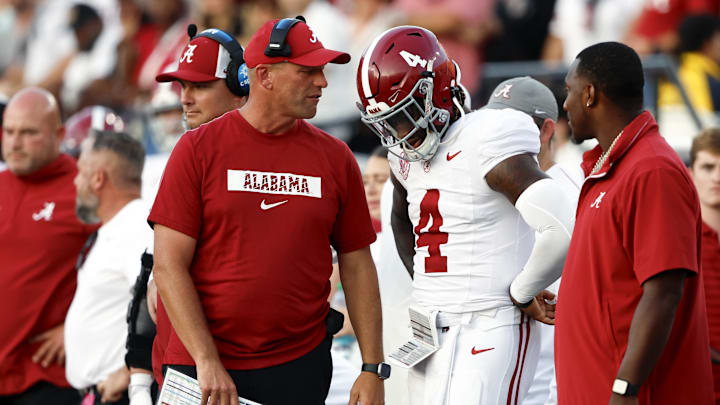On Monday, it was announced that this year’s College Football Playoff committee would be using “enhanced metrics” to help in the ranking process this year, foremost among them: record strength.
The new metric will provide a clearer picture of how teams performed against their schedule, rewarding teams that beat high-quality opponents, and minimizing for beating a lower-quality one. The same goes for losses. A loss against a high-quality opponent won’t carry nearly as hefty a penalty as a loss to a low-quality opponent.
The explanation of the new metric sounds fairly identical to the explanation for why college football uses a committee to decide its postseason instead of a standings process. The committee is responsible for introducing nuance beyond the win and loss columns, and last year’s committee failed to do that outright.
Now, with this new metric to hold their hand, the College Football Playoff will likely have more 9-3 Alabamas and fewer 11-1 Indianas or 10-2 SMUs.
“Record Strength” metric is great news for teams with the toughest schedules
Last season, Alabama finished 11th in the CFP rankings with a 9-3 record. The Tide’s late-season loss to Oklahoma was inexcusable and probably should have been disqualifying, but with a 12-team CFP, there are going to be plenty of teams with flawed resumes that earn a spot in the postseason.
It was almost impossible to argue against Indiana, which finished eighth in the CFP rankings and earned the No. 10 seed in the playoff at 11-1. Still, the Hoosiers were arguably just as flawed as the Tide, or even 9-3 South Carolina that had its record stained by an early-season loss to LSU without a healthy LaNorris Sellers.
Indiana had no wins over teams that finished ranked in the CFP top 25 and was manhandled by Ohio State in its only real test. SMU was in a similar boat, with losses to BYU and Clemson, and its best win coming over Louisville. Yet, those programs got rewarded while Alabama, which beat Georgia, South Carolina, and LSU, was kept out.
Then, predictably, both Indiana and SMU looked like they didn’t belong in their first-round CFP loss. In fairness, Alabama looked even worse in its ReliaQuest Bowl loss to Michigan with Jalen Milroe and most of its starters playing, and South Carolina lost to Illinois in its bowl matchup, so it’s an inexact science.
Still, if the committee is there to introduce nuance beyond win totals, it failed to do so last season, and hopefully, having an “enhanced metric” staring them down will help.
One of the aims of this initiative is to entice more programs to play Power 4 opponents in the non-conference instead of inflating their win totals against Group of Six and FCS foes. However, they’ll likely have to prove that they’re willing to put in a nine-win team over a 10-win team first before Alabama starts adding a game against Ohio State instead of UL Monroe or Eastern Illinois.
